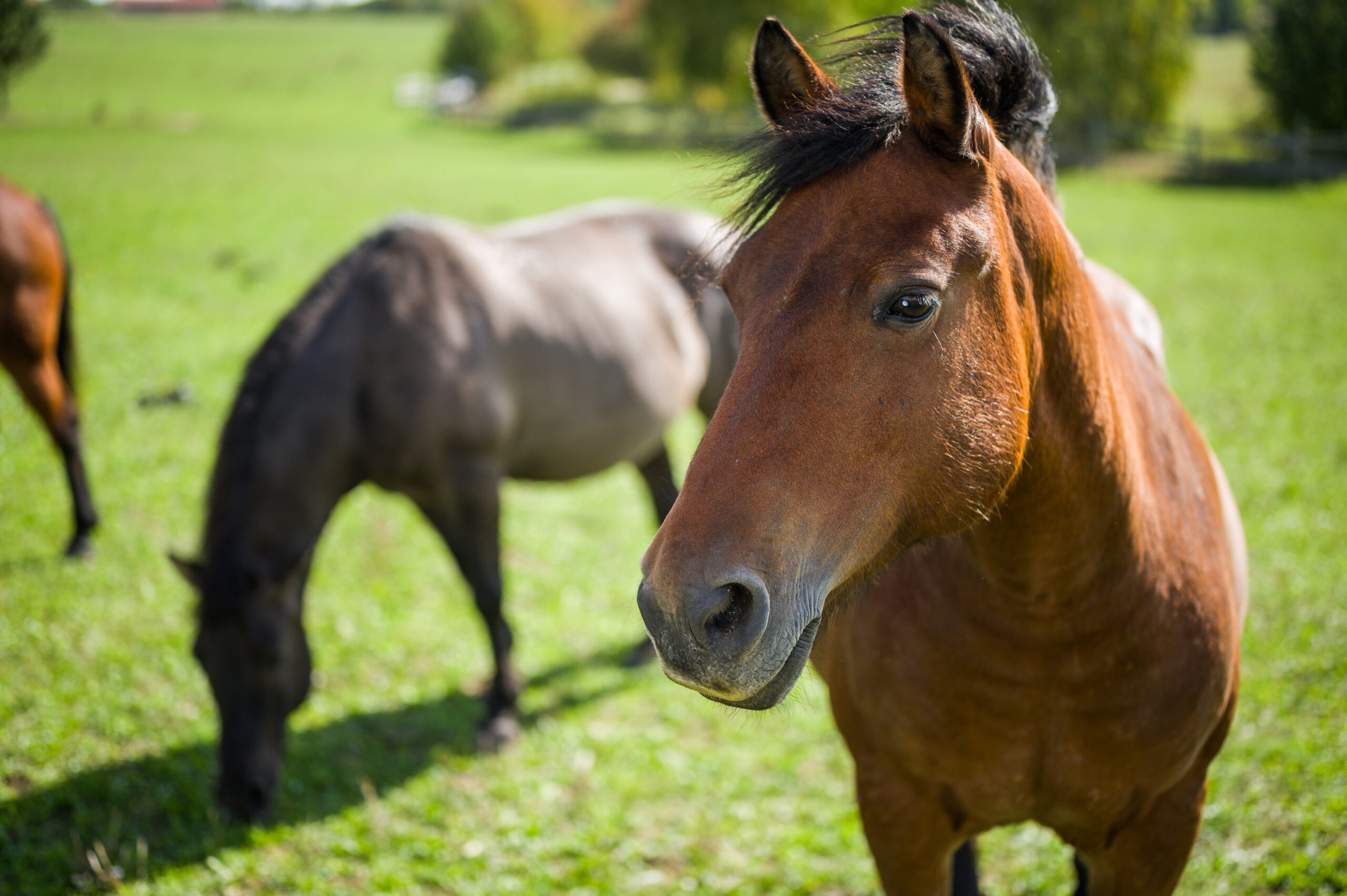The Szépalma Foundation’s Nominee Adoption Programme was created to give animal lovers the opportunity to experience what it is like to bond with an animal, to be responsible for its welfare for the rest of its life.
The ownership of the nominally adopted animals does not change, they remain the property of the Foundation after the adoption and continue their life in the Szépalma Stud Farm.
Adoption is conditional on the animal’s sponsor transferring the agreed amount of money to the Foundation’s bank account on time each month to support the care of an animal (of course, it is also possible to arrange a period of time longer than one month).
The animal’s sponsor is entitled to visit the animal(s) on a regular basis, at a pre-arranged time, under professional supervision.
There are two types of nominal adoption.
- If you want to patronise a horse/horse that you like, you will be listed as the sole sponsor on the Foundation’s dedicated forums.
- The adopter wants to patronise a sympathetic herd/flock/guild because of their sympathy for an individual or species. Several people can sponsor the same animal, but we will list all sponsors here.
We hope that this opportunity will provide a space to develop a personal bond between the adopted animal(s) and their “owner”. In our fast-paced world, few people can afford to spend several hours a week with the animals they love. Each animal is given individual attention at Szépalmán, so that the named owners can visit their charges either once a year or once a week, safe in the knowledge that the animal is in good hands at all times, and that all they have to do is enjoy the occasional companionship of an animal and the knowledge that they are providing for the happiness of an animal or group of animals.
Nominal adoption support fee:
- equine – minimum 50 000 Ft / month
- herd/ flock/ gullet – minimum 30 000 Ft / month
For more information, please contact us personally at pamukanna@szepalma.hu
The following animals are all members of the Sépalma Nominee Adoption Program.
Our horses
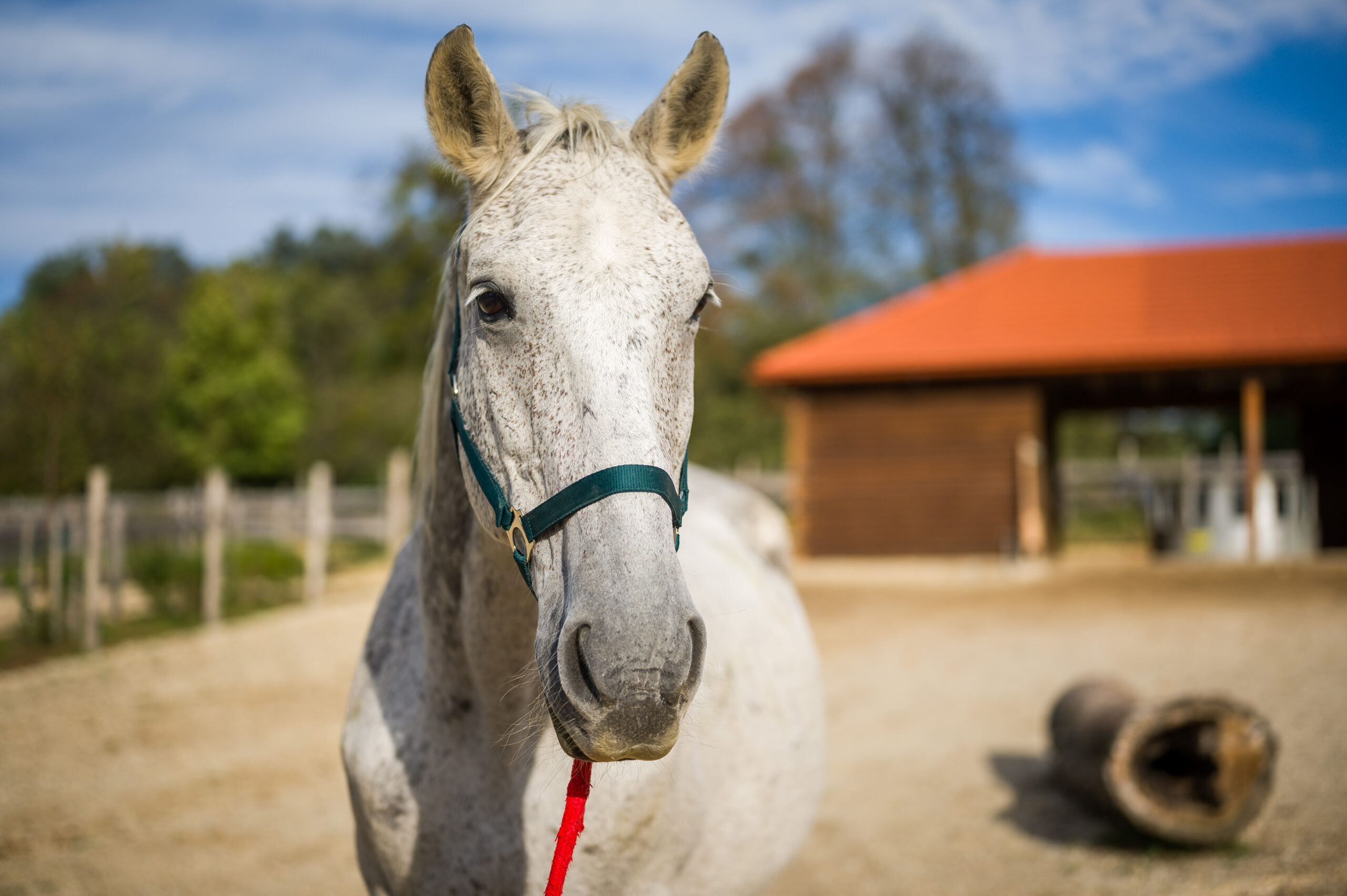
Dínó
Dino cannot be told without his partner Dandar, because they came to Szépalma together and in the almost twenty years that they have lived here, they have given visitors to Szépalma many happy moments. Their imposing grey color was a feast for the eyes, and when they sat in front of the carriage, everyone who visited the estate felt like a true gentleman. Dino spent his working years at the stud as a coachman, but also as a sleigh driver in the beautiful countryside around Szépalma. He has been happily retired at Szépalma since 2016 and is now part of one of the largest stud farms. Dino is a really strong character, he knows what he wants and his companions respect that. He was born in 1998 and is still in excellent condition thanks to careful care.
Dandár
Dandar cannot be told without his partner Dino, because the two of them arrived together.
Its beauty and the many happy moments in the almost twenty years it has been here have been a source of For visitors to the beautiful city. Their imposing grey color offered a magnificent sight in front of the carriage
They made everyone who took a tour of the estate with them feel like a real nobleman.
Like Díno, Dandar also served as a coachman, and then took part in the in the riding education of children from Széchenyi. Dandar was very interested in working with children, His calm and patient nature made him a great companion. At present, his age and health have needs his own box - especially in winter - but still with his favorite companion Star who is also his boxing neighbor.
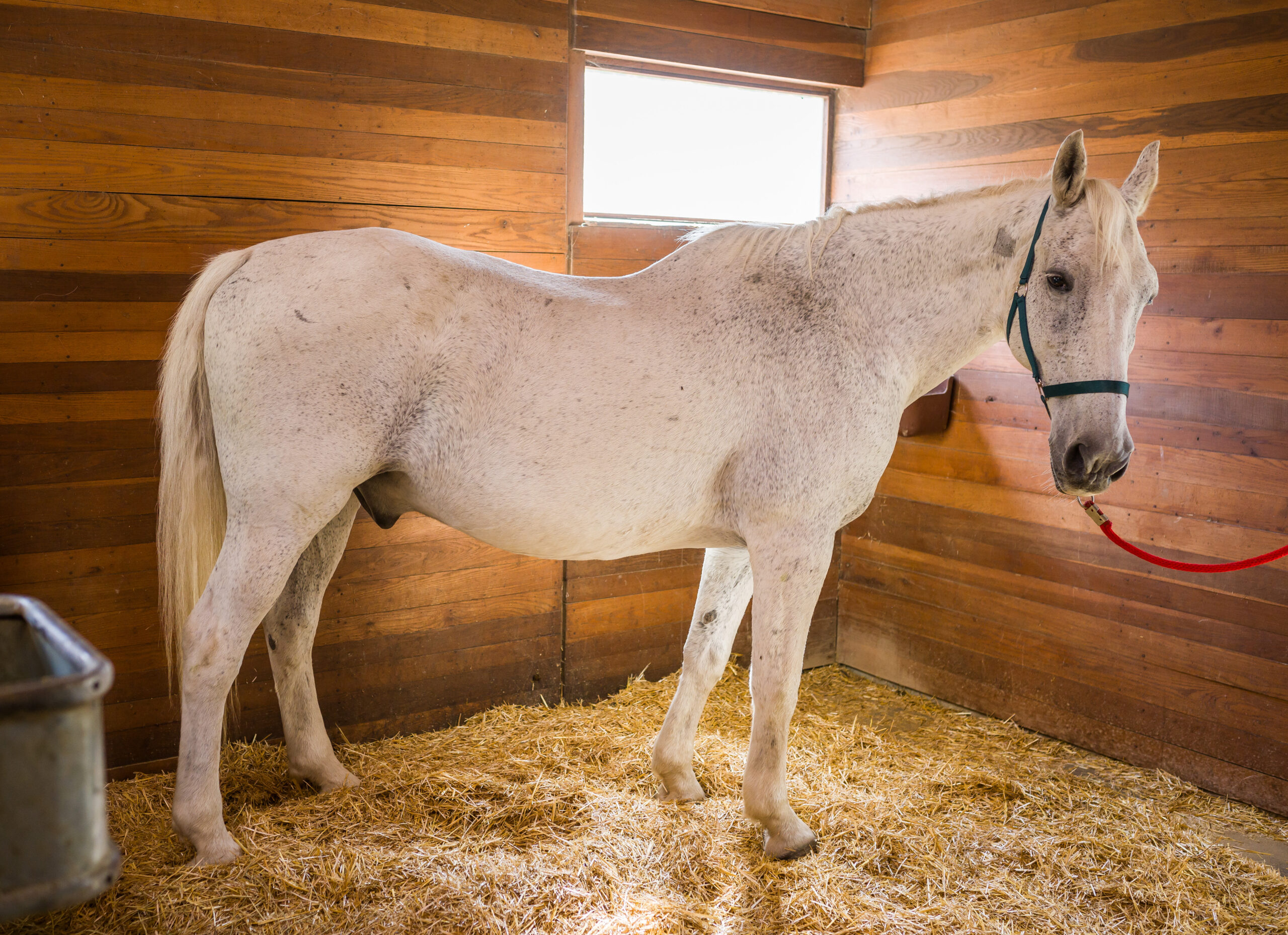
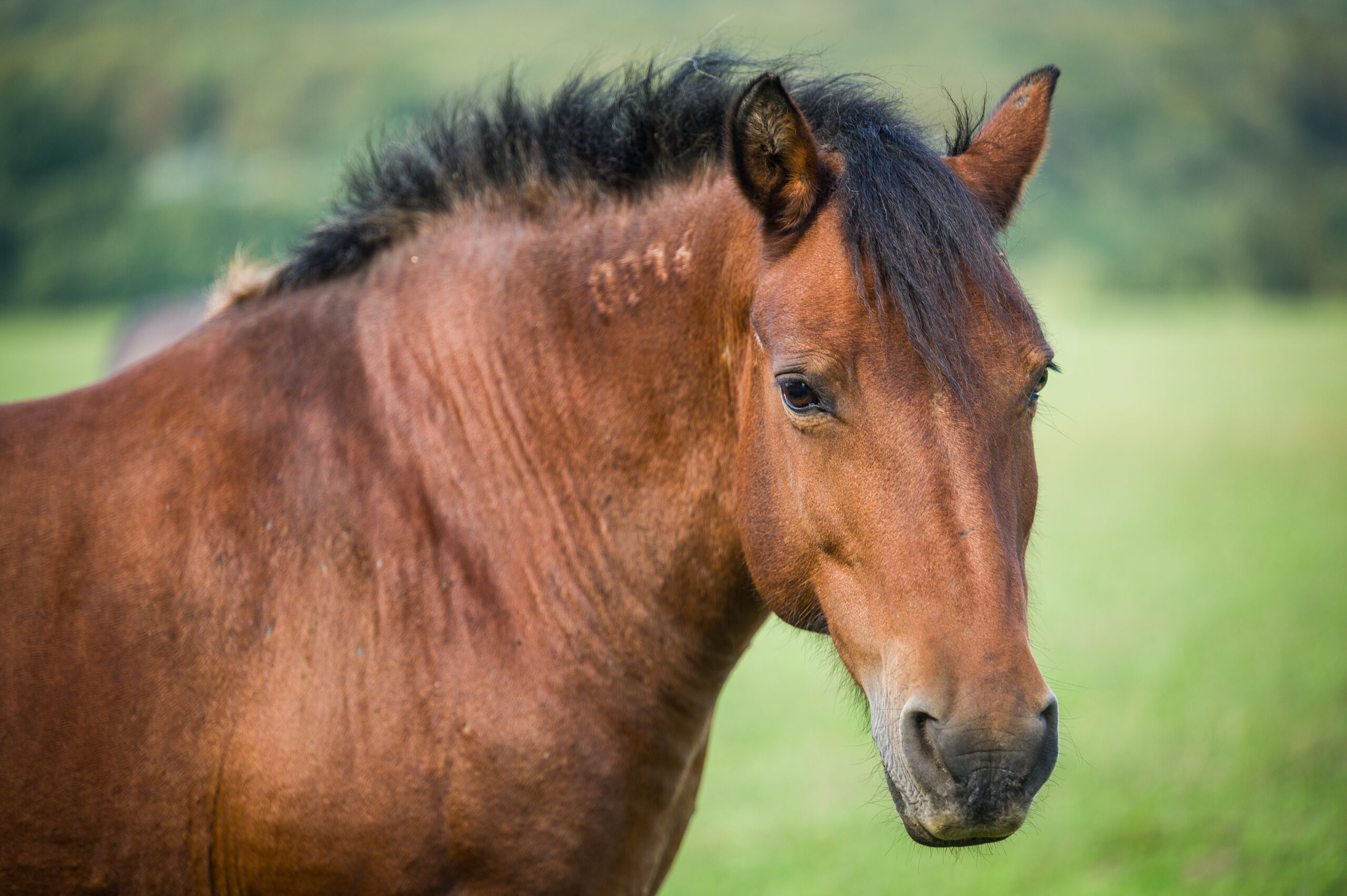
Lindus
Lindus and Linduci, half-siblings from sire to son, arrived together in Sépalma. These two mares are "worth their money". It was said that they could be taken in a carriage, but in Sépama they preferred to ride the children. Originally they weren't called that, but Linda and Heni, but that has now become commonplace. They were both so cute and so similar (the name Linda means sweet) that their former caregiver started calling the fuller one Linduzi for convenience. Lindus is not only slimmer than her sister, but unfortunately also recognizable by her punk hairstyle, as she unfortunately suffers from so-called sweet itch, where she scratches her mane and tail in summer as a reaction to mosquito bites. When the mosquitoes are around, he therefore often spends time in the stable, where he enjoys being stroked and cuddled by his grooms.
Linduci
Lindus and Linduci Half-brothers and half-sisters who arrived together in Sépalma. These two mares are "worth their money". It was said that they could be taken in a carriage, but in Szépamaa they preferred to ride the children. Originally they were not called that, but Linda and Heni, but that has been forgotten today. They were both so cute and so similar (the name Linda means cute) that their former caretaker started calling the fuller one Linduzi for the sake of simplicity. Linduci is famous for her full bosom and beautiful long mane, which all the children love to spin for her whenever they can. She is a real leader and can walk through walls, or at least she tries to. The rest of the team eagerly follow her on every adventure.
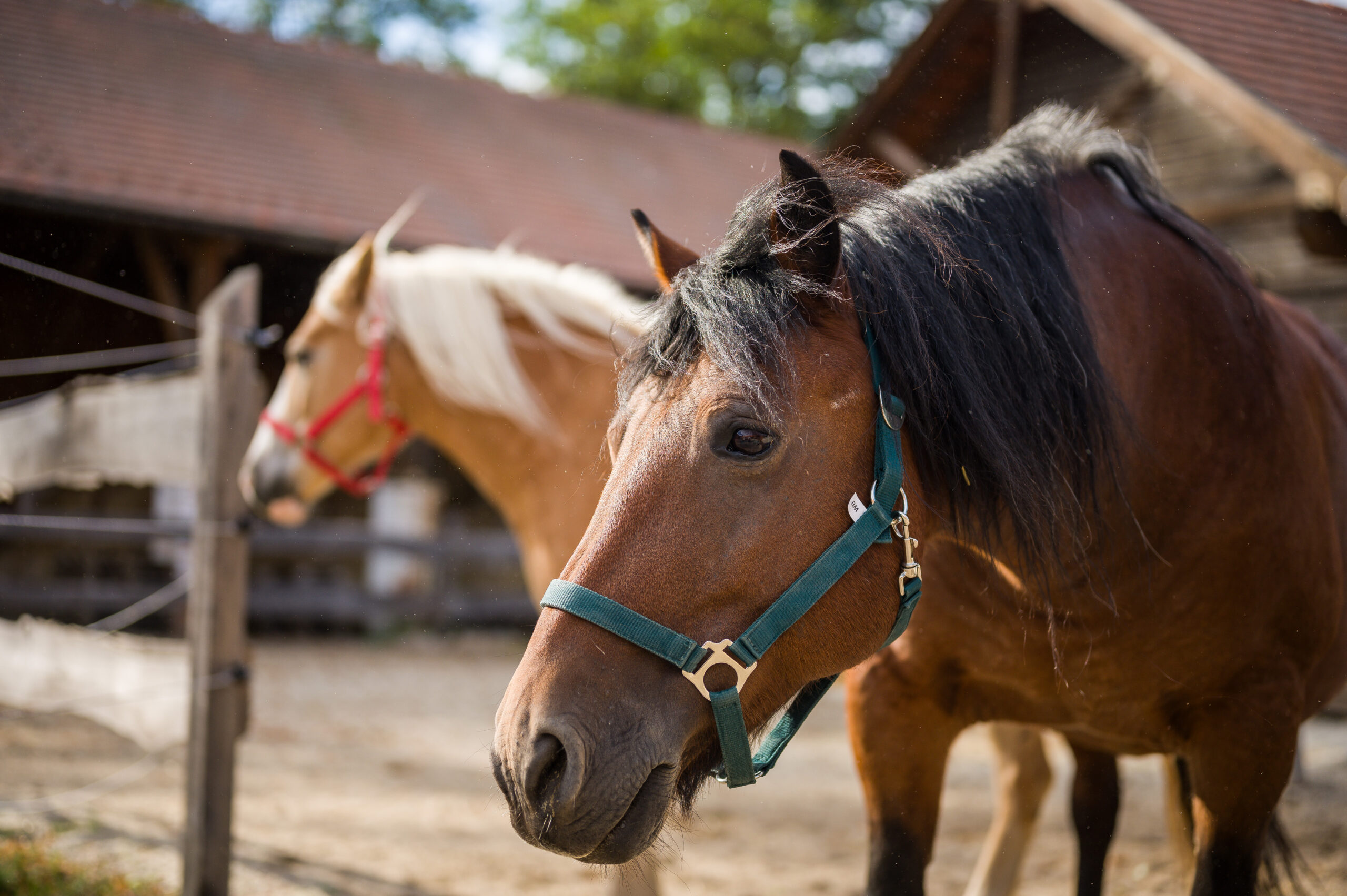
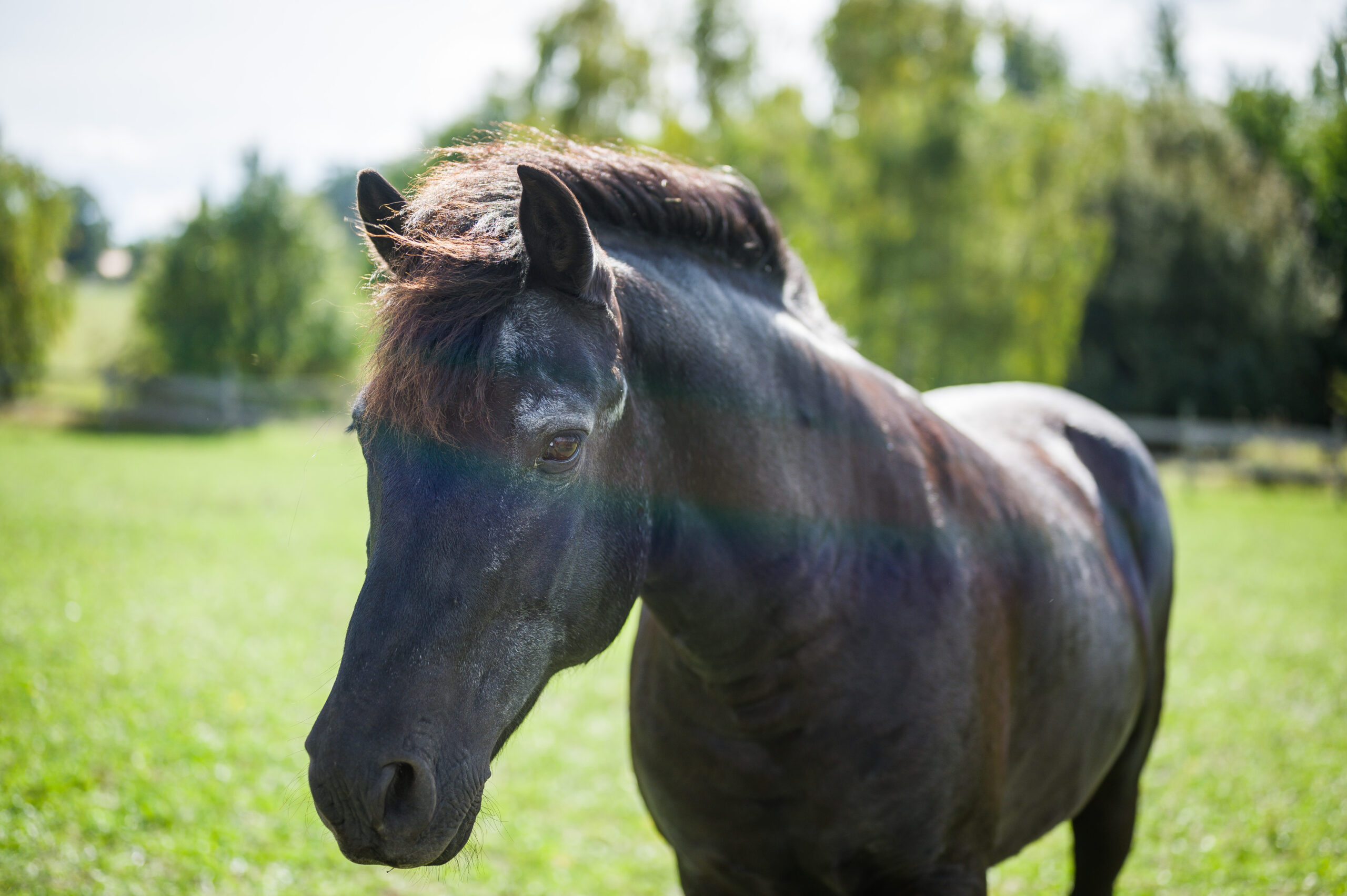
Dani
Dani one of the veterans of children's riding in Schoenalma. They came to Szépalma with a donkey, Bipio, whose adventurous life is another story. Dani quickly settled into the small group of huskies and was the children's favorite for many years. Thanks to his even-tempered and determined character, he not only won the hearts of the children, but also of many adults. Behind Dani's black coat lies a true gentleman. Although he is not the bravest of the group, his peaceful nature is loved by most horses.
Orsi
Orsi In 2014, at the age of five, he came to Szépalma to join the existing small team at Hucul, with the important task of giving children the opportunity to ride him. Orsi was born in Romania and came to the stud through a dealer. The little horse was very lucky in that he was severely malnourished and fundamentally distrustful of humans, but the management at the time decided that he should find a home in Szépalma despite his shortcomings. After he was tamed, he spent little time doing what he had come to Szépalma to do, as riding on the estate had been stopped. To the great delight of many children, he still lives with the companions he worked with in Szépalma.
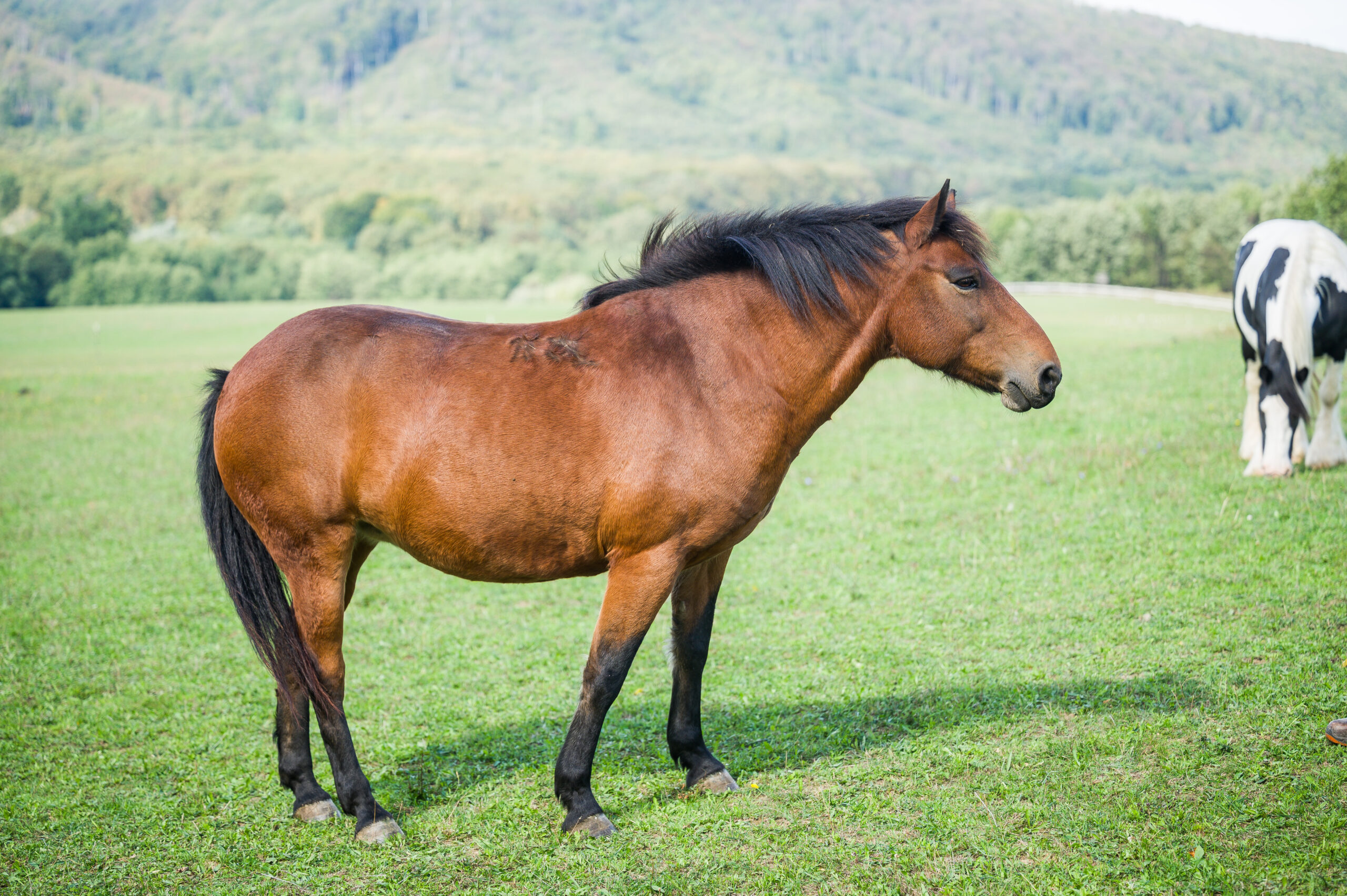
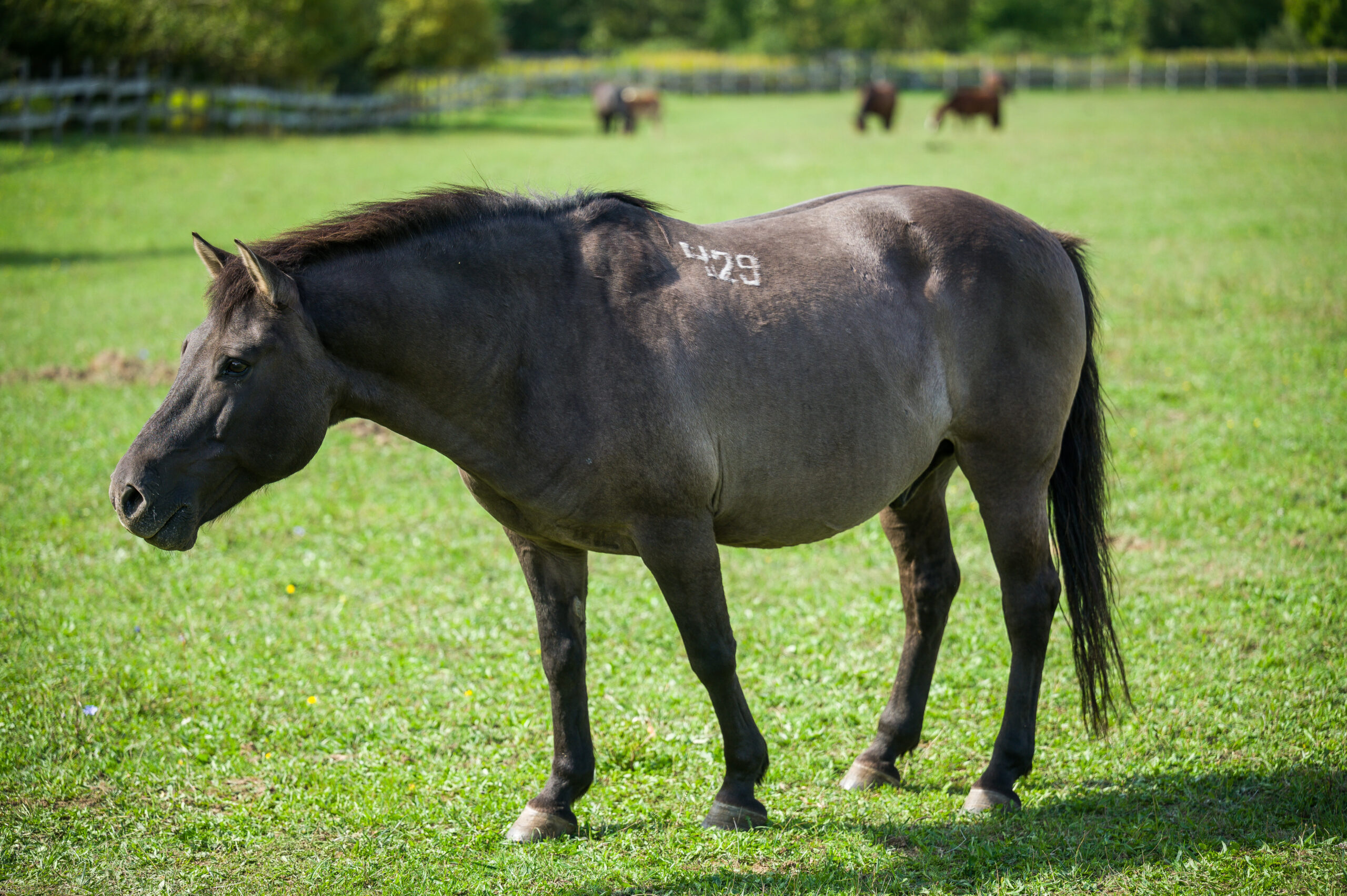
Walero
Valero a really strong-willed, stubborn horse, if his ears were a little longer he could be a donkey, because his color is deceptive. When an animal lover adopted him, he was told that he was likely to be a dominant character at stud. That was an understatement, to say the least. He had absolutely no respect for his owner, who literally felt like hell because of it. There were many horse trainers in the picture with whom Walero behaved like a real gentle lamb. But his owner was too afraid of him and finally decided to send him to the slaughterhouse. Since 2019, he has been a proud member of Hucul Stud Farm and visitors can see him regularly. Thanks to professional care, Walero and his companions successfully participated in the first Szépalmás animal welfare camp of his life in 2023.
Cseresznye
Cherries the beautiful mare has been proudly roaming the pastures of her lovely meadow since 2020. For many years, she faithfully and patiently helped beginners learn to ride. She never had a bad stride. When his legs were no longer fit enough to carry riders on his back, he had to retire. Everyone who knew and loved Cherry wanted to help him. His benefactors heard about his beauty and tried their luck. Cherry, according to her handlers, is still very grateful and proud of this opportunity.
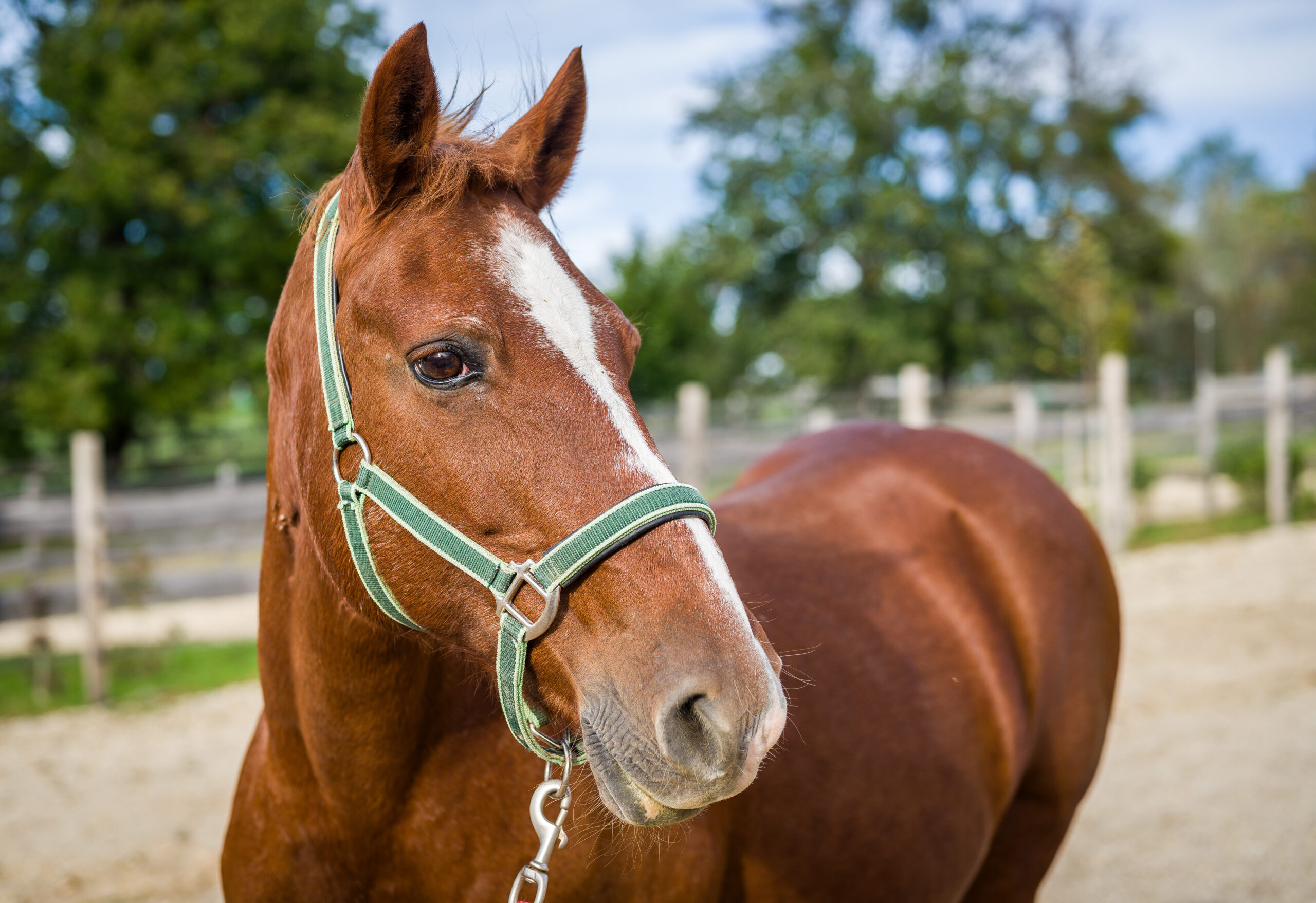
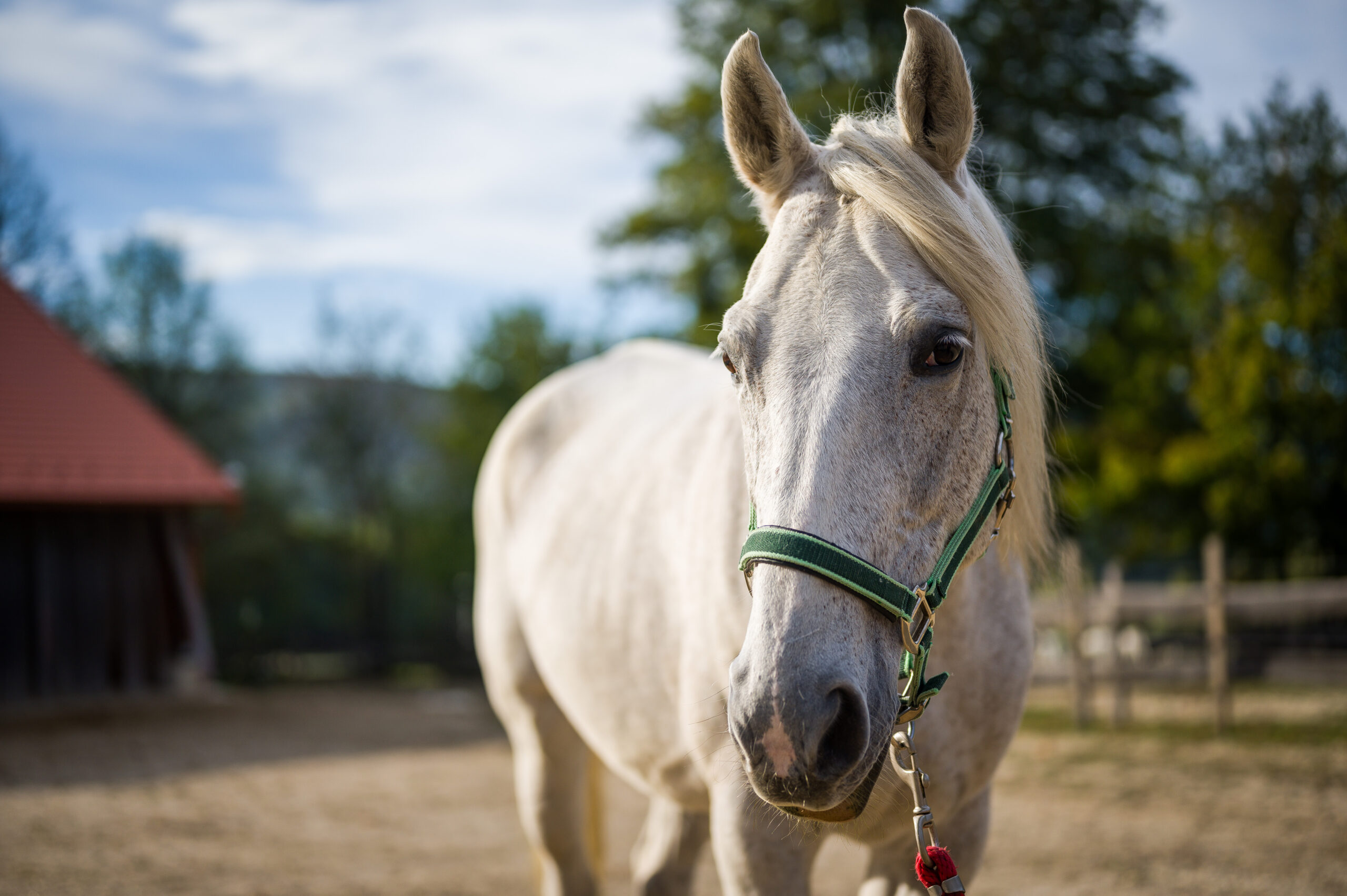
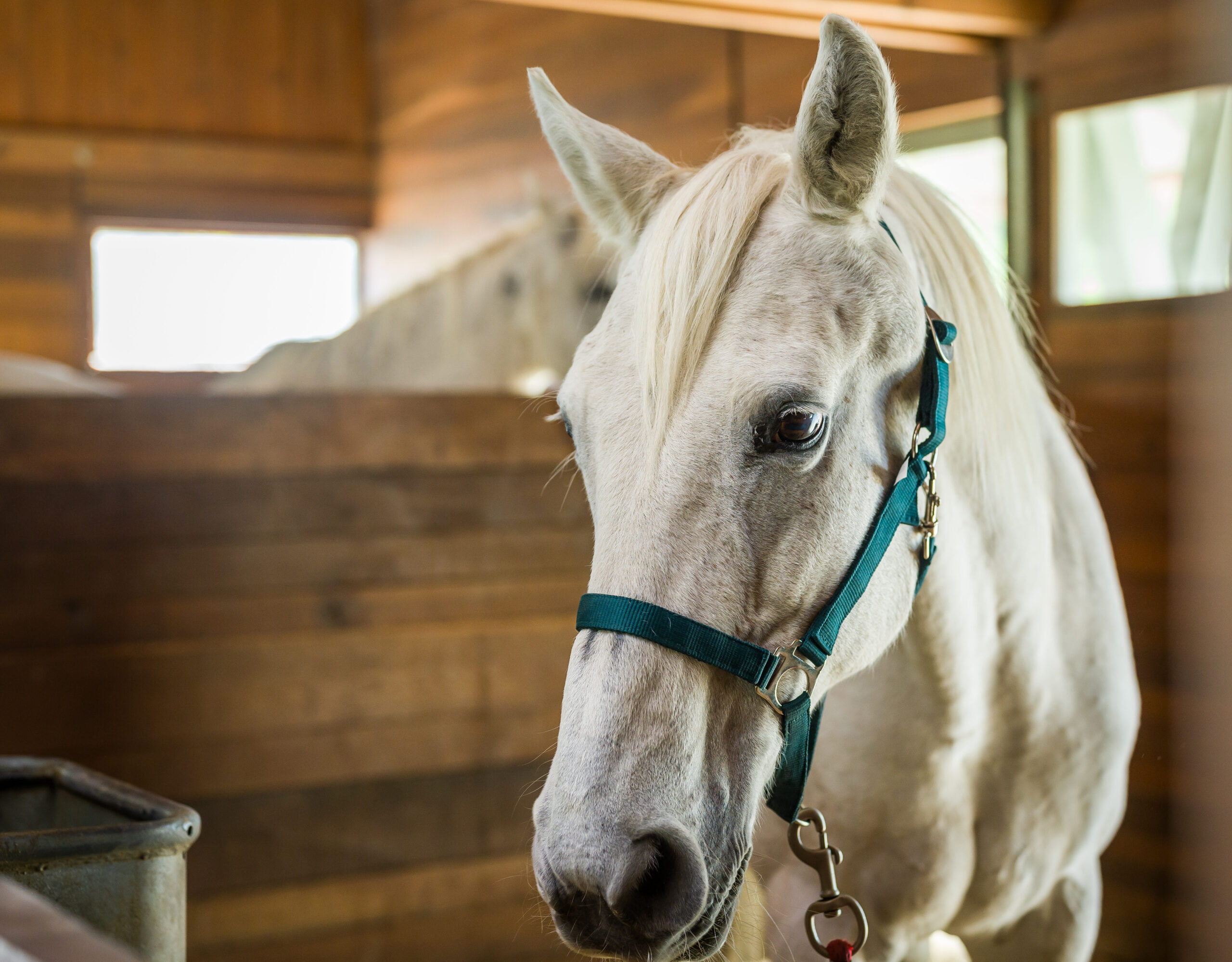
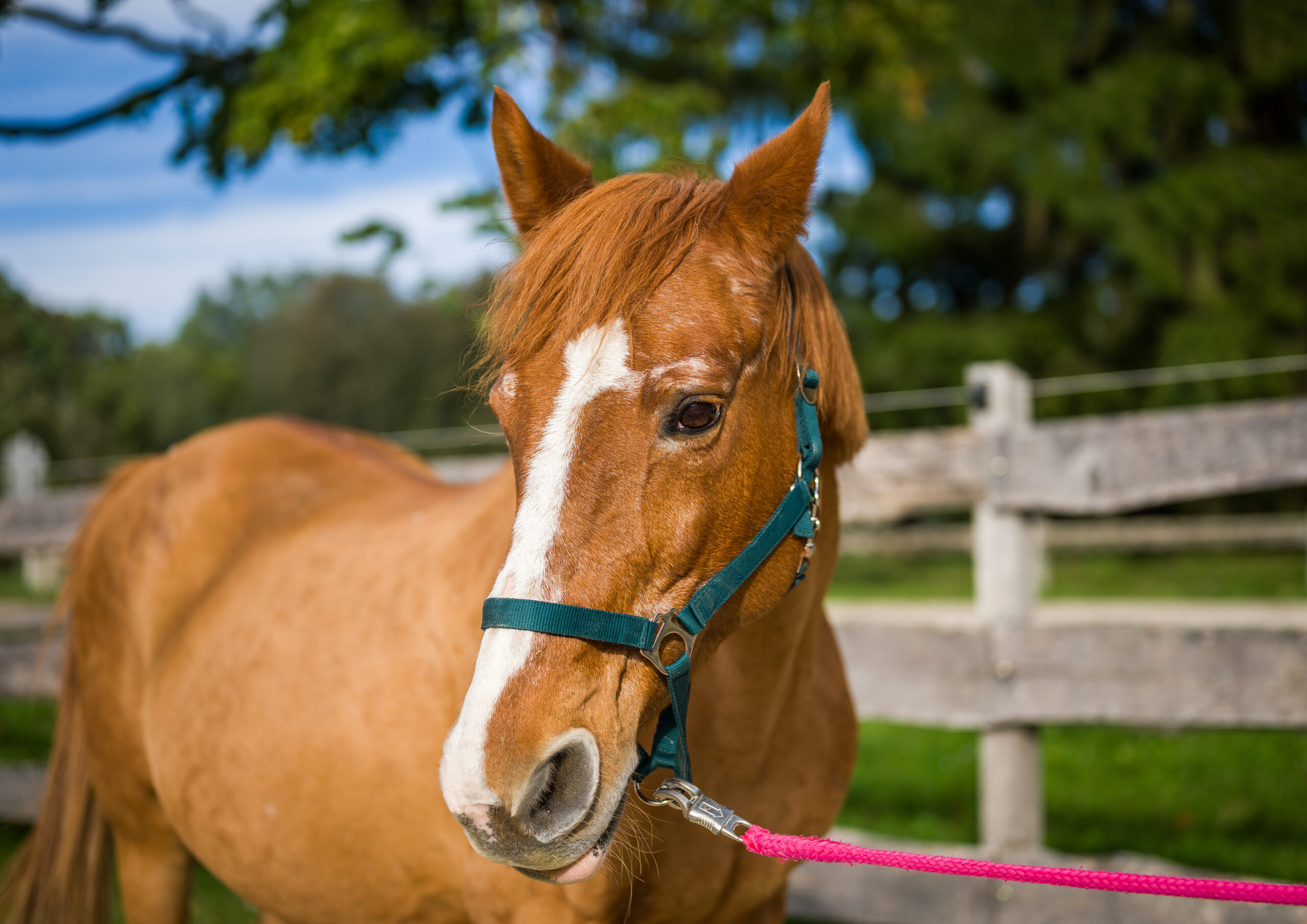
Csillag, Chiquita, Zizi
The mother hen Star and daughters Chiquita és Zizi came to Szépalma from a neighboring riding stable in 2020. Their owner contacted the foundation and explained their situation. He was the proud owner of the three mares from Kisbér, but due to his age he was finding it increasingly difficult to care for them. After learning that there was an animal welfare foundation in Szépalma, he seized the opportunity to stand up for his beloved animals. She wanted the best for her ungulate family members, and we could see that for ourselves, so we decided to adopt Star, Chiquita and Zizi.
Zizi needed intensive veterinary treatment for a skin tumor, which was carried out in a rehabilitation stable in Switzerland thanks to our close contacts abroad. Thanks to the high quality of the treatment, Zizi was able to return to Szépalma after a long time, and the three mares were reunited in Szépalma.
Other animal species
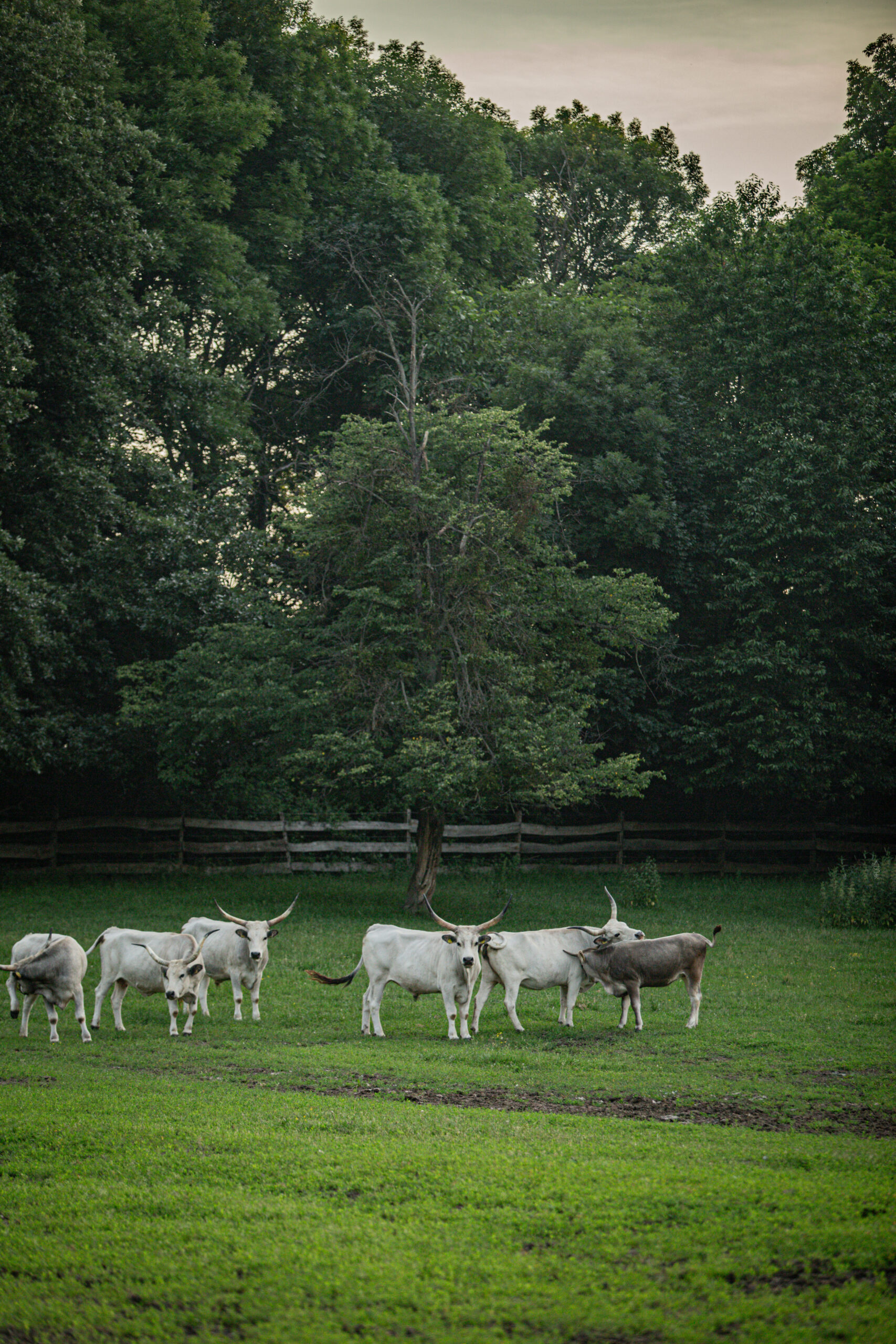
Szürkemarhák (Anja, Ödön, Raffael, Bella, Rose, Oskar, Tony)
The Hungarian grey cattle is one of the legally protected domestic animals native to Hungary. It is a true Hungaricum, one of the world-famous characteristics of the Great Plain.
The Hungarian Grey Cattle can capture anyone's attention with its beauty, its boldness, its imposing appearance suggesting ancient power. The breed reached its lowest point in the 1960s and has been on the rise ever since. Importantly, when kept outdoors in winter and summer, they are disease resistant and graze on taller, more vigorous vegetation. Therefore, they do not damage grassland by grazing or trampling, and plants recover quickly from chewing. The cow calves easily and is very attached to her calf, protecting it jealously. If it dies, it can wander and search for days. It is interesting to note that the oldest known Hungarian grey cow lived 32 years. The grey cattle is a rugged, hardy breed, but not a fussy, easy-to-handle breed. So, as tempting as their beauty is, it is recommended to admire these animals from a fair distance.
Anja, Ödon, Raffael:
Hungarian grasslands sometimes seem endless. Sometimes an animal gets lost in the drive. This is what happened to the little bull calf, Ödön, who was found and taken into care by our colleagues. But his mother was looking for him and after a few days she found him with us. We asked their owner if they could stay in Szépalma, since it had turned out this way. Now that Anja and Ödön have become part of Szépalma, they are sure to have a forever home with us. What we didn't know at the time was that Anja was already pregnant and had given birth to Raphael in the care of Szépalma.
Bella and Rose:
Bella's birth was a complete surprise to us, the "accident" happened when Tony was a bull calf when he arrived and was let loose with the cows, and later little Bella was born, a Carpathian-Bornered-Grey cattle mix. It was not planned, but we are delighted to have a lovely new addition to our family in Schoenalmai.
Tony:
Tony is a cattle of the Carpathian Borzder breed of exceptional beauty, who lives with the grey cattle. We were contacted by a desperate well-wisher. On the farm where he kept his animals on a tenant basis, he met a young bull calf, Tony. He knew that if the calf's fate went as planned, he would be sold, fattened up somewhere and slaughtered. Even though he knew that this was the "normal" thing to do, he did not want to accept that this was the fate of Tony, whom he had grown so fond of. He kept looking for a solution. As we were deeply touched by the story, we decided that Tony could join the Schoenalma guild.
Magyar Racka juh
The breed has roots dating back to the 4th millennium BC. The upright, straight-horned woolly sheep of the then Mesopotamian area is thought to be the ancestor of the modern racka, but no source clearly proves when and how the first sheep was introduced into the Carpathian Basin. Some theories claim that they arrived with our conquering ancestors, others claim that they are of Asian origin and spread during the migration of the people. Similarly, there is some debate about the characteristic V-shaped horn, which is upright and twisted around its vertical axis, and which may have spread through mutation and selection, but may have been introduced by other peoples. However, with the spread of breeds with better meat, milk and wool yields, their numbers began to decline. The decline was so great that after the Second World War it was only thanks to the enthusiastic breeders in Hortobágy and Debrecen that the racka did not disappear from our country. It is a very hardy breed, resistant to the adverse weather conditions and harsh housing conditions, with a lively temperament, shy and not handy. A distinctive feature is the horn, which is worn by both ewes and rams.
The racka ewes of Schoenalma were owned and bred by an Austrian artist. The dams were retired and became the wards of the animal welfare organisation Gut Aiderbichl in 2018, where one last generation of lambs was born. They then arrived at Szépalma in 2019 as one big family and have been a lovely addition to the farm's pastures ever since.
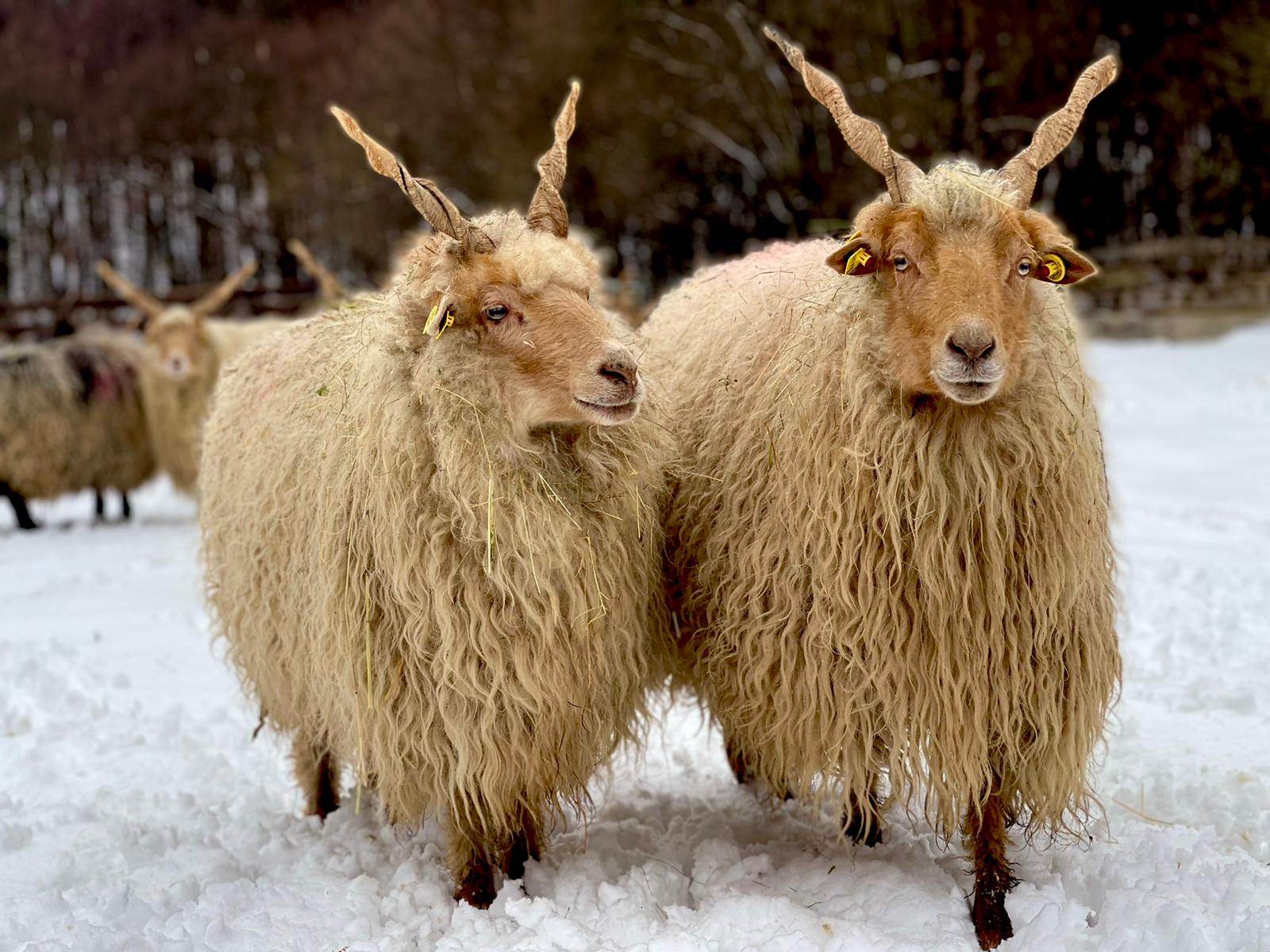
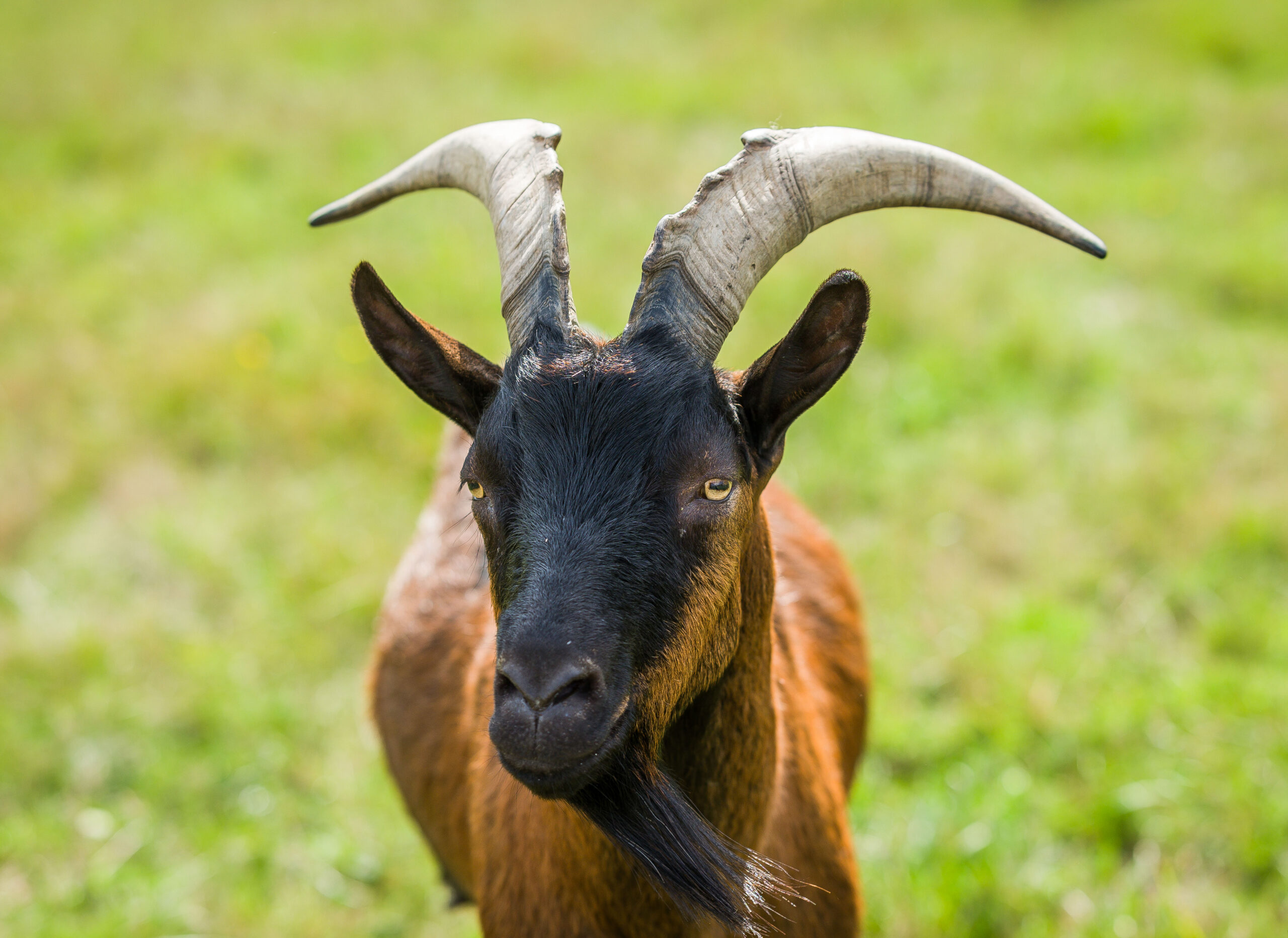
Samu a kecske
In Pannonhalma, the black and brown-furred she-goat lived in a shed. A neighbour lady heard about Szépalma on a TV programme and decided to inform the Szépalma staff about the goat's plight. On the basis of this information, the management decided that it was worth investigating the matter personally.
Colleagues arriving on the scene were shocked to find Samu all alone with a chain around his neck in a messy, barren yard. The chain had already grown into his flesh, leaving painful wounds on his neck and the rest of his body. When the goat saw our colleagues, you could read it in his eyes; "How good you are here, take me anywhere!"
The goats' digestive system is mainly based on plant food. Samu lived mainly on dry bread and other kitchen waste, which is definitely not appropriate and healthy for a small ruminant. After Samu was abandoned by his former owner, the goat was transferred to Sépalma. Even after only a short time in transit, he couldn't get enough of the beautiful green hay. After his arrival, he was neutered as a goat and when his health allowed, he was put in with the other goats and sheep in our herd, which made him so happy that he was jumping around the pasture with happy four-legged leaps. One of our most hands-on goats ever since, he can be led and, with the right motivation (his carers know what kind of reward he likes), he's up to little tricks.
Mici a kecskebak
Everyone has heard of a dog in need of rescue, wandering on the road unattended, endangering his life and the lives of others on the road. Well, Mici was one of those strays, only he didn't bark, he barked. He was wandering with his companions, and it was thanks to a Facebook ad that the Foundation's staff learned of Mici's existence. When our colleagues arrived to take Mici away, the miners from Dudar told us that Mici had companions before, but their owner had died and they started wandering aimlessly. Mici was then wandering alone, having lost his companions. The miners, however, tried to take good care of Mici, so he almost lived in the mine. As he was clearly not safe and his care was not being taken care of, our colleagues, with the agreement of the Mayoress of Dudar, moved him to Szépalma, where he has been living peacefully with his fellow animals ever since.
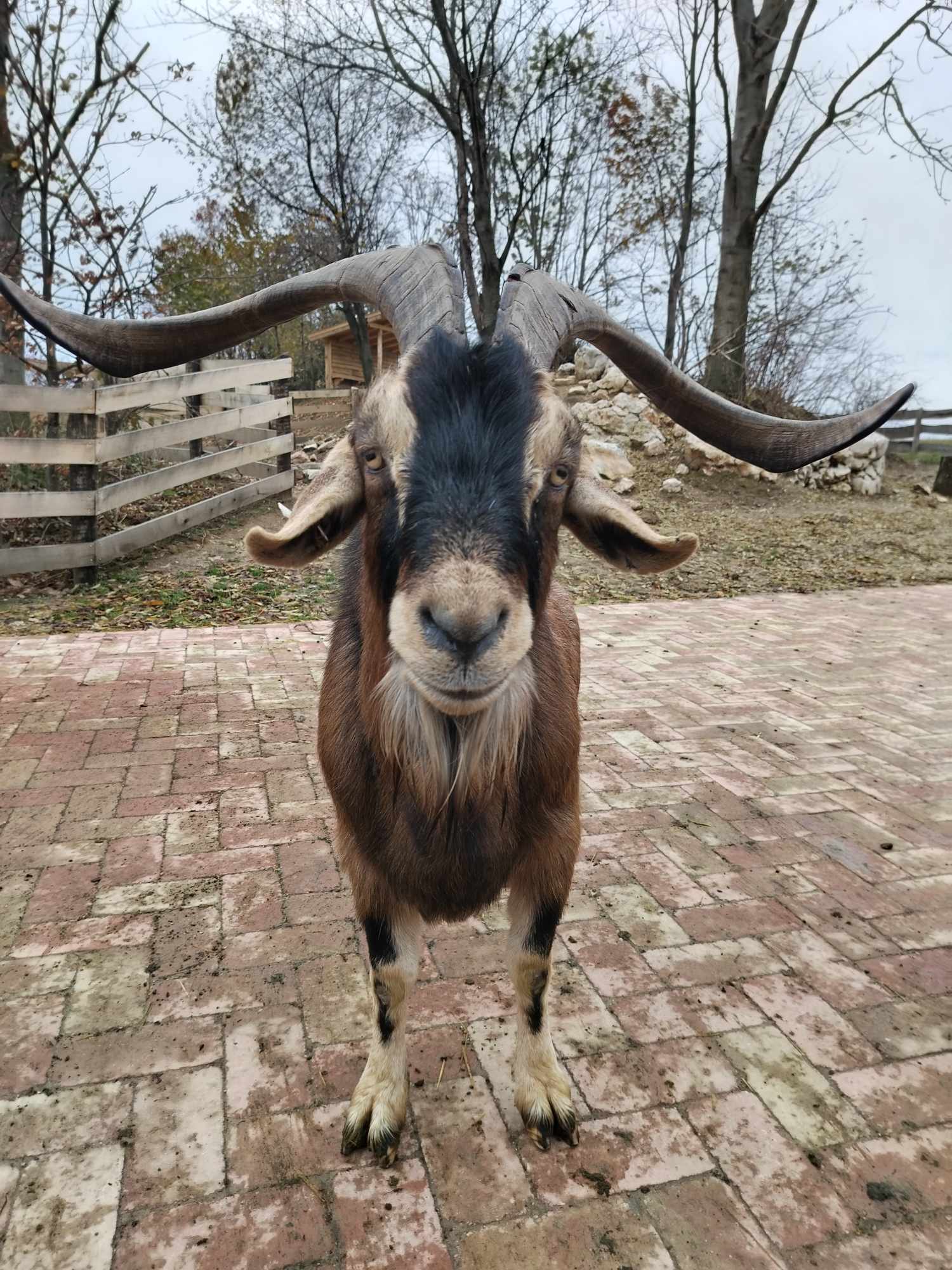
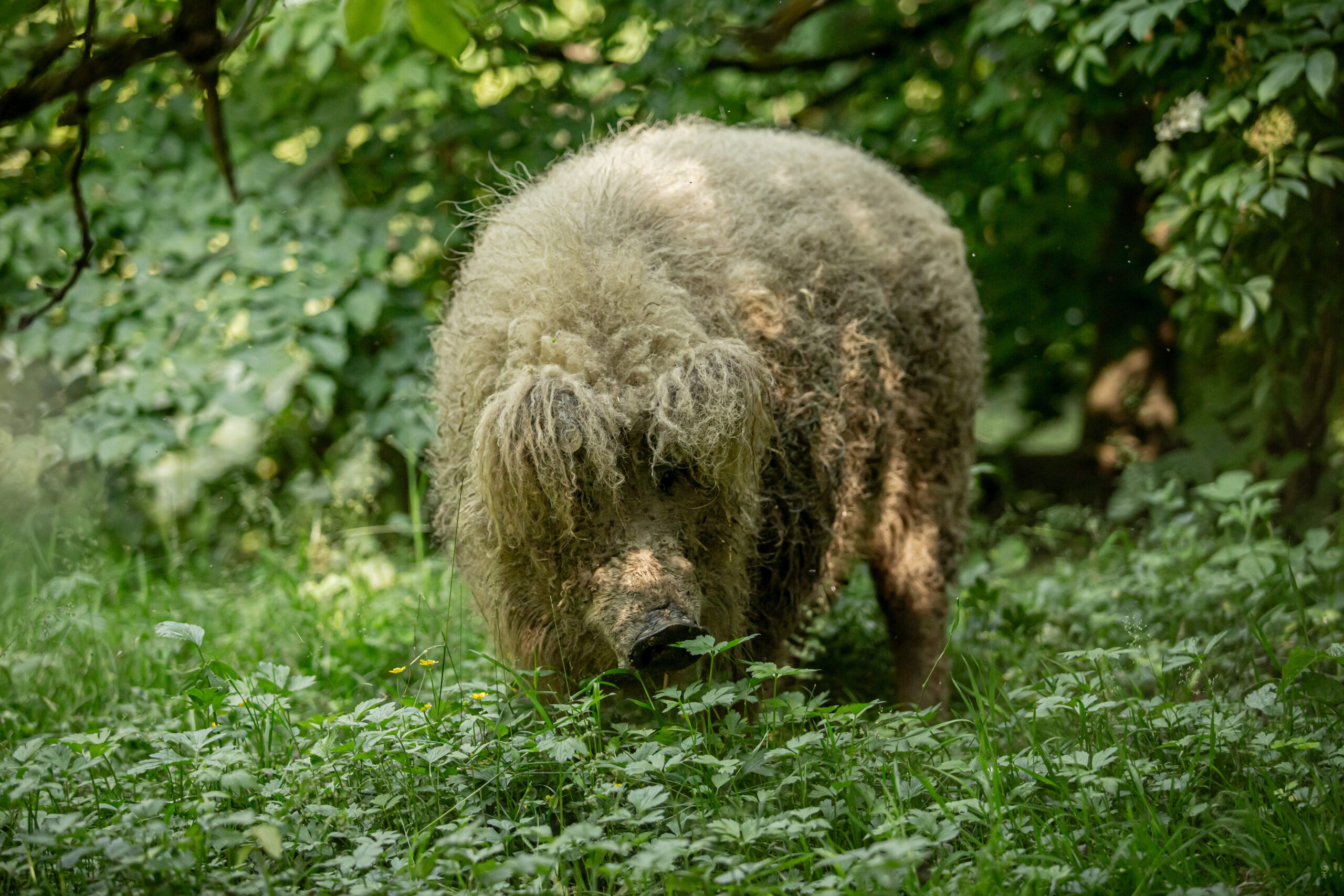
Mangalicák
The mangalica is one of the legally protected domestic animals native to Hungary and a world-famous pig breed. It is traditionally reared in free-range conditions, so it requires more space than its breed mates and is more tolerant of environmental factors. The two mangalica in the Sépama also require large areas of land and wetland. This gives them ample opportunity to carry out the camel activities that are important to them, such as trekking and tidal flats. Our chef will never make a tasty meal out of them, nor will they be given any kitchen waste, their menu consists solely of grains and vegetables. His herd has been keeping mangalica pigs for decades, but even the generation before the current one died out in emaciation. Reading our columns, some will feel that this is a waste, but pigs have the intelligence of three-year-old children, they recognise their reflection, they have a network of relationships, they have an organised system of relationships, they have a long term memory and they can form close relationships with humans. So it's understandable that it's not just the caretakers at Sépalma who are so attached to the two furry ruffians. Their official names are Béb and Mici, but some of our colleagues and guests also like to call them Perec and Kréker. This shows how much they are loved and important members of the animal community.
